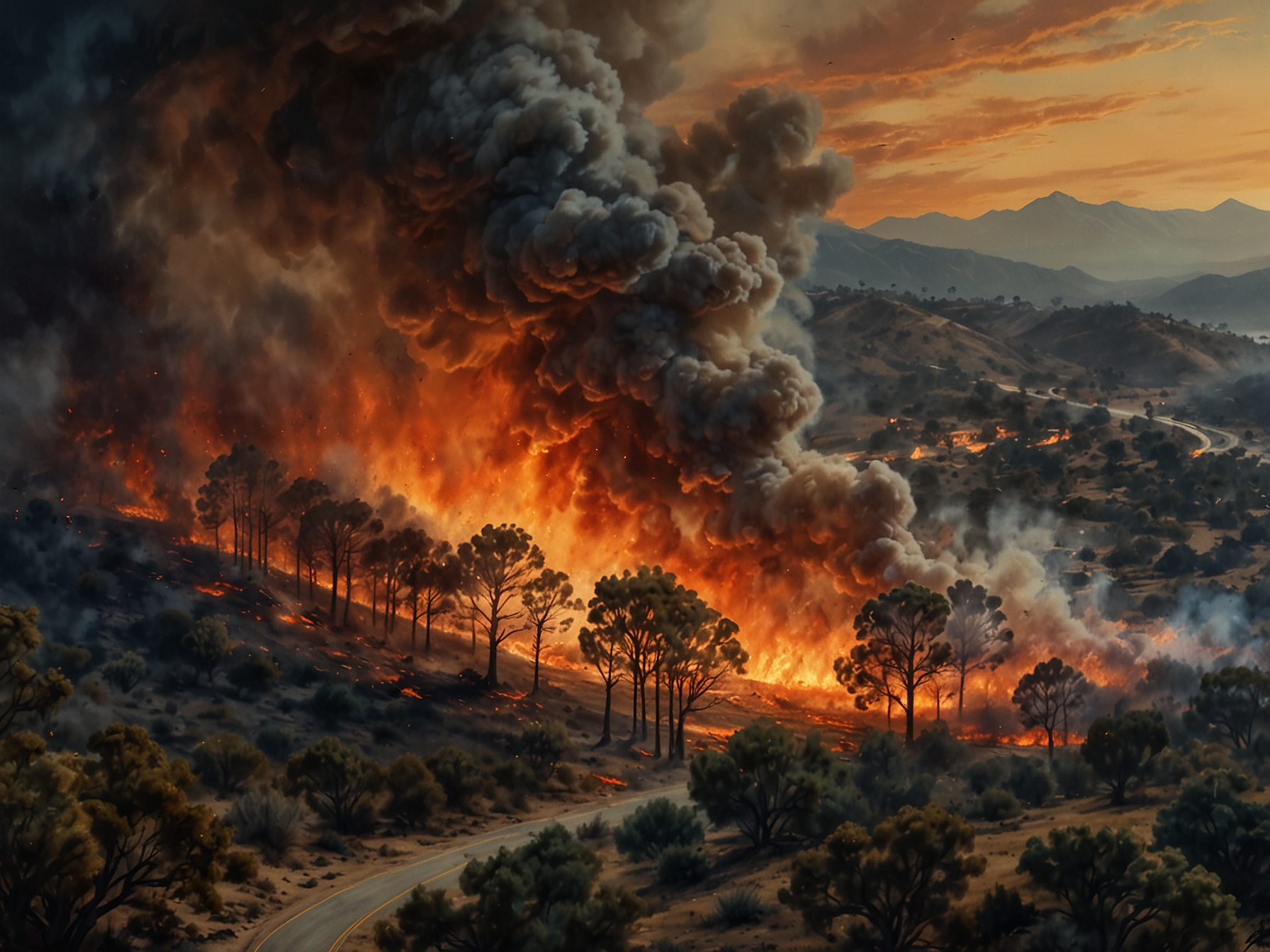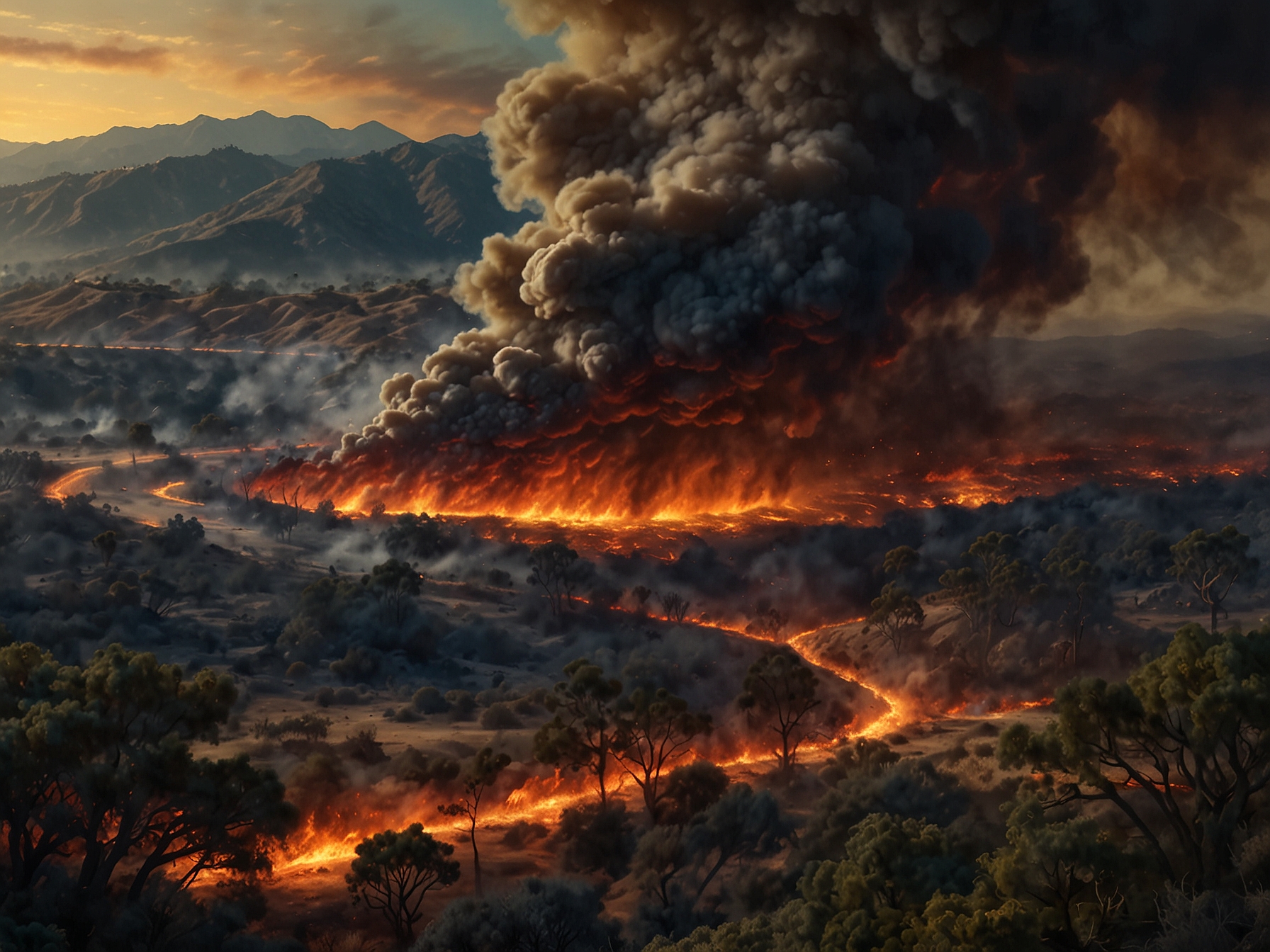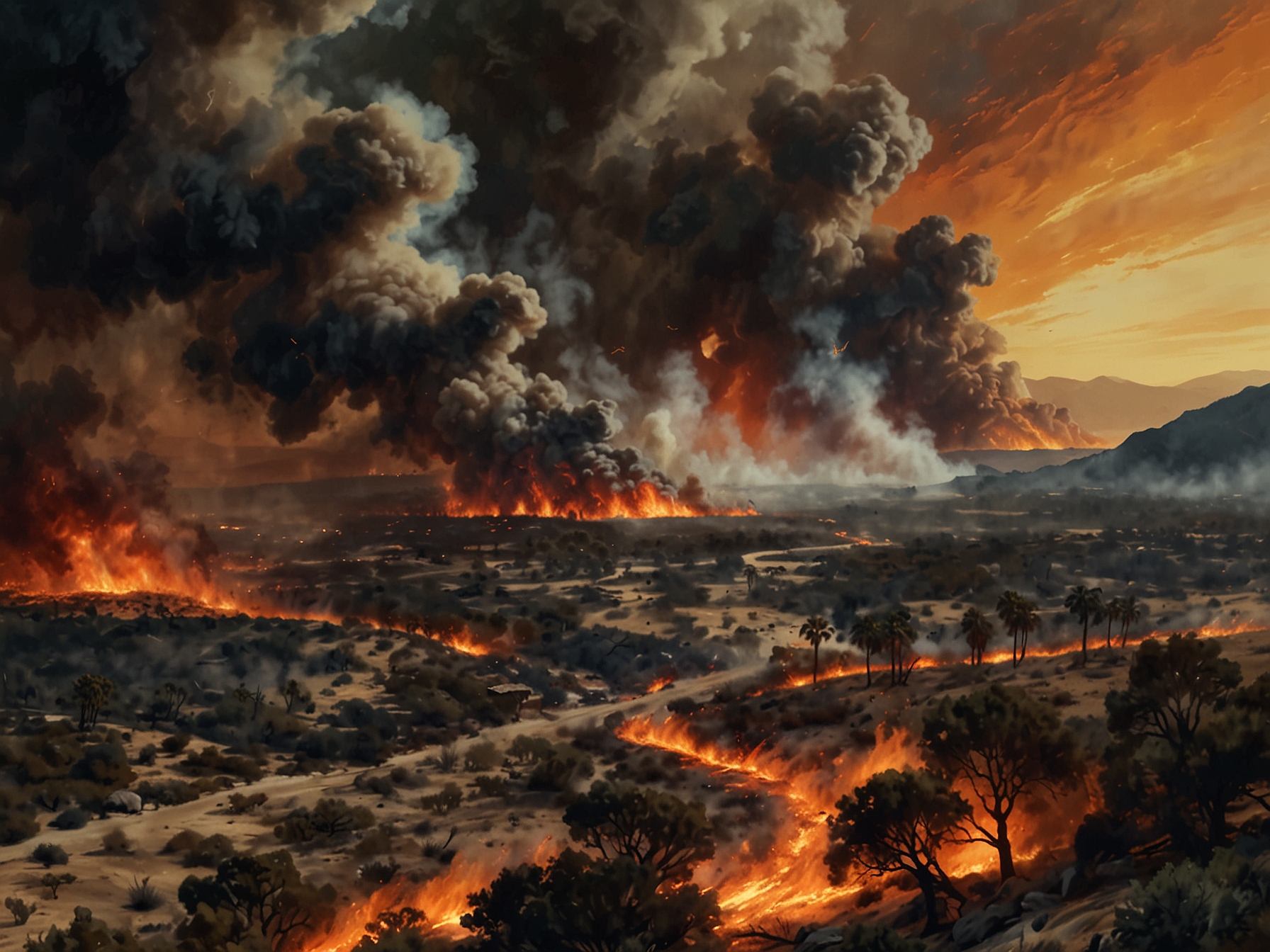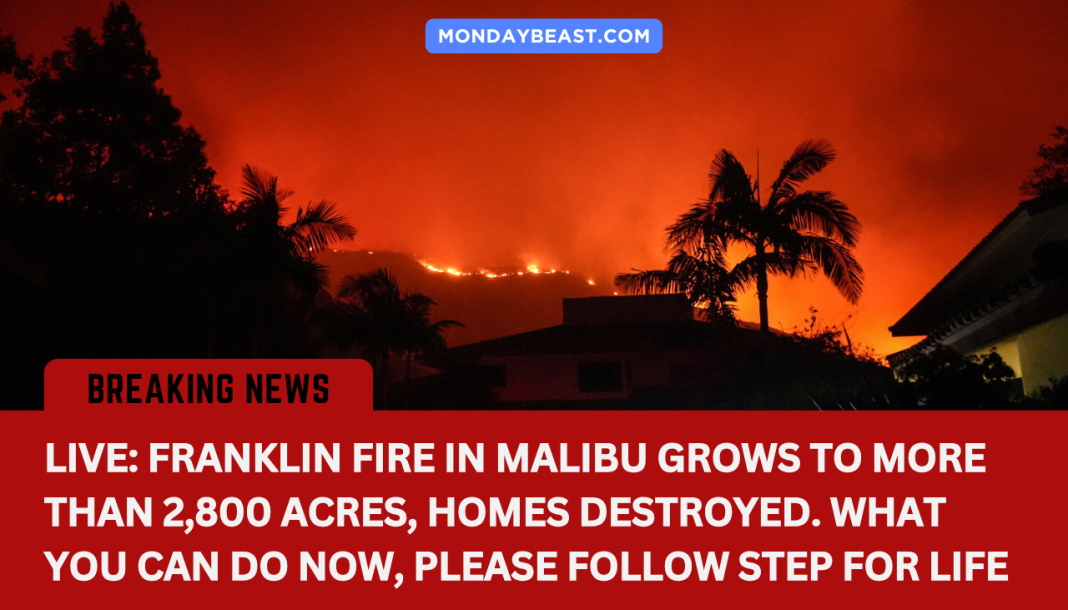The Franklin Fire struck near Malibu Creek State Park. It’s a stark reminder of the Woolsey Fire from 2018. Six years have passed, yet the wounds remain fresh. Fires have become a recurring nightmare for this Southern California community.
As flames flickered to life on a Monday night, residents felt an all-too-familiar fear. They evacuated their homes, once again packing bags in haste. The echoes of the past were deafening.

By Tuesday afternoon, thousands had left their homes. The Pacific Coast Highway closed, and the atmosphere buzzed with tension. For those who lived through Woolsey, it was hauntingly familiar.
The Franklin Fire, while to some degree under control, has already scarred the landscape. The California Department of Forestry and Fire Protection reported flames have spread over 2,700 acres. It’s not just land; it’s lives, homes—whole histories burned to embers.
When the Woolsey Fire erupted, the chaos spread quickly. In just two days, it consumed vast swathes of land. Residents hopped in cars, children cried, and pets were whisked away.

This time, things seemed a bit different—if only slightly. Authorities boast improved communications via the LA-RICS system. This new system promises uninterrupted communications during emergencies.
It is one advancement learned from the maddening chaos of 2018. Local governments hope it helps maintain order amid panic. Frontline responders use the upgraded system effectively.
They can coordinate efforts even when face-to-face communication dwindles. It reflects a sincere effort to ensure fewer lives are disrupted or lost. James Perry, a Malibu resident, had a significantly different experience this time.

He received timely emergency alerts as the fire erupted. Unlike during the Woolsey Fire, when he felt abandoned and lost. Despite the advances, there is much that remains unchanged.
Pepperdine University, perched precariously near the flames, has once again advised students to shelter in place. This decision has sparked division within the university community. Some appreciate the safety net, while others feel confined.
This duality reflects the anxiety swirling around them. When the Woolsey Fire rattled the community, fears ran high. Parents of students worried for their children’s safety.
Students questioned the rationale behind the shelter-in-place order. Could staying on campus possibly be safer than fleeing? Henry Adams, a student, shared the weight of sleepless nights.
Friends huddled in the library, surrounded by anxiety. It was a night unlike any other. Yet, amidst fear and uncertainty, there is hope.
Through hard lessons, communities can learn to adapt. The scars of the past can lead to a more prepared future. As the flames rage, it’s crucial to foster community support.
Neighbors huddling together can strengthen their resolve. In times of crisis, human connection can buoy the spirit. Will 2024 mark yet another chapter in Malibu’s fire saga?
Or has the community truly begun to turn the tide? Only time will tell. But this moment, like every moment before, is ripe with opportunity for resilience.
It’s vital that everyone reflects on these experiences. How does one prepare for the unpredictable? How does one find hope amid devastation?
These fires leave scars deeper than charred landscapes. They imprint on the hearts and minds of every single person affected. Community resilience is now more essential than ever as the fire continues to blaze.




